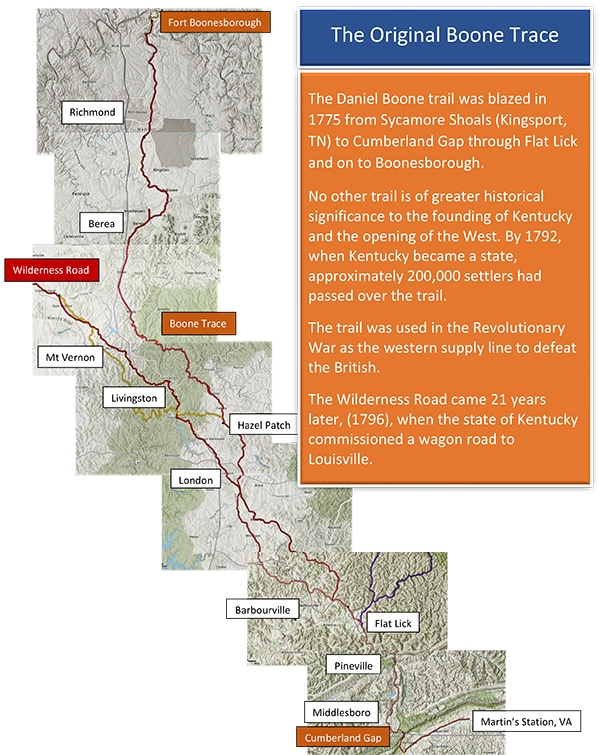The legendary frontiersman, Daniel Boone, first charted an early trail for other pioneers to follow into America's heartland during the spring of 1775. That trail came to be known as Boone Trace.
This was the first road, EVER, into the land that was to become Kentucky and started the Westward Movement when our country was first born. Today, you can see the inspiring sights that greeted Boone and his fellow travelers, as well as visit museums that help bring this vivid chapter of American history to life. Explore the map below to plan your journey through Kentucky's frontier days.

That trail, which was only a bridle path extended from current-day Kingsport, TN, through the Cumberland Gap to Boonesborough. By the time Kentucky became a state in 1792, more than 200,000 settlers had passed over it, enduring severe hardships, including Indian attack, cold, and hunger. No other trail is of greater historical significance to the founding of Kentucky and the opening of the west than “that little road.” Combining Boone Trace of 1775 with the Declaration of Independence of 1776 was the beginning of the Westward Movement and the birth of our country as we know it today. We stopped being British and became Americans! And it comes right up through the heart of Kentucky!
Below is the order of the cities of Boone Trace if traveling north.
Maps of the Auto Tour can be found at this LINK.